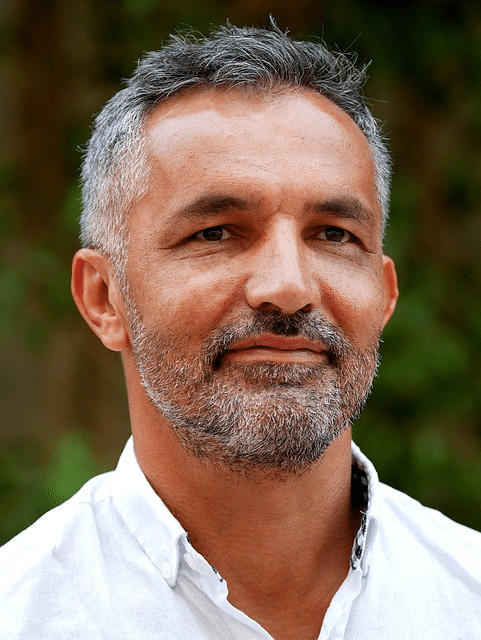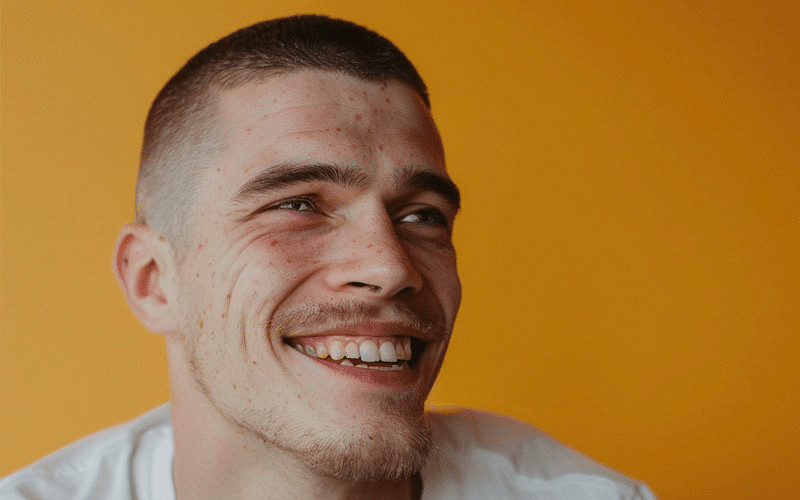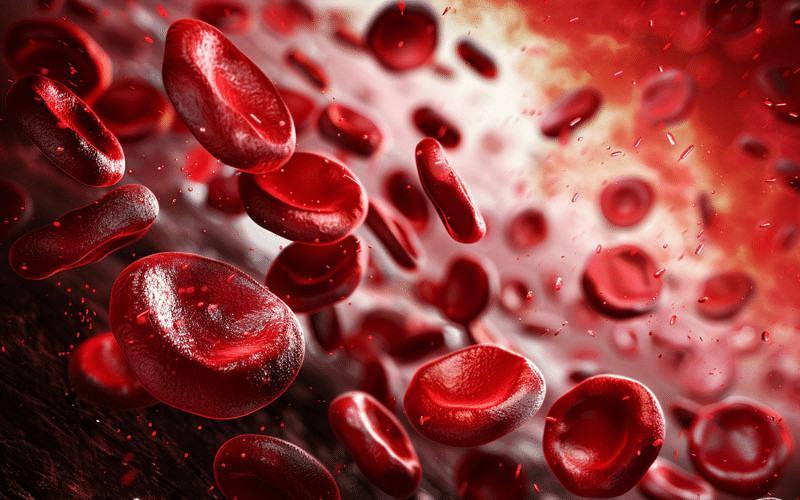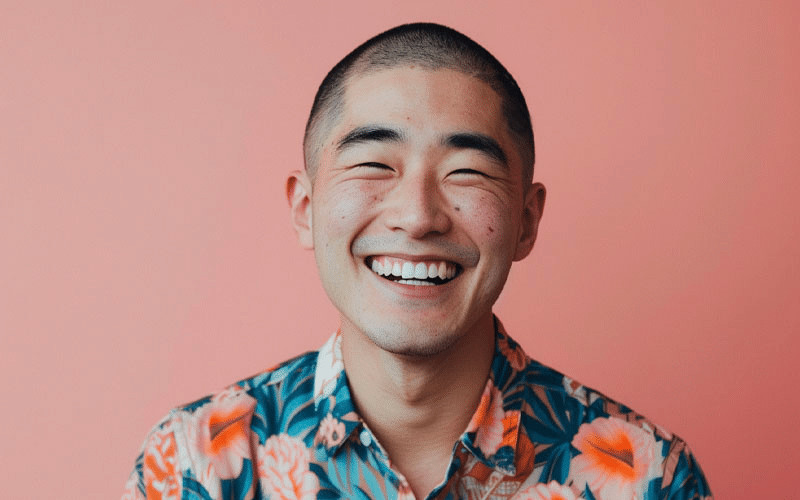Getting a fuller head of hair through a hair transplant is undoubtedly an exciting step in the hair growth process. However, the path to recovery doesn’t conclude with the surgical procedure alone. Many individuals seek additional solutions like laser hair growth therapy for hair loss to enhance results and foster healthier, thicker, and fuller hair growth even after hair transplant surgery.
One such effective FDA-approved hair growth home therapy is Low-Level Light Therapy (LLLT), commonly known as laser therapy. Frequently, many patients opt to use a lasercap after hair transplant procedures to optimize the long-term results of hair regrowth.
While the aesthetic benefits of new hair growth are evident, the impact of laser therapy extends beyond cosmetic considerations. The restoration of hair volume and density contributes to a positive self-image, boosting confidence and well-being.
Individuals experiencing hair loss often face emotional challenges, and the regenerative effects of laser therapy play a role in enhancing not only the physical appearance but also the mental and emotional aspects of an individual’s life.
Low-Level Laser Therapy Hair Growth

Laser hair treatments (LLLT) are a game changer in the world of hair restoration, as they improve blood circulation in your scalp. Think of it like a special pass for nutrients to flow in, creating a buzz of cellular activity. Low-Level Laser Therapy plays a big role in hair growth stimulation due to the laser’s ability to induce your body’s own healing mechanisms.
This exciting and easy-to-use tech is one of the best hair loss treatments available to increase hair growth and encourage hair follicles to live long, healthy lives, especially after completing a hair regrowth transplant. And trust me on this. I’ve experienced the power of laser treatment on my heels and Achilles tendon recently and the results have been nothing less than incredible.
Additionally, these caps are like the epitome of convenience, essentially letting you bring the hair clinic to your home. Rooted in the science of Low-Level Laser Therapy (LLLT), laser caps are made to enhance blood flow focus, stimulate hair follicles, and create an overall environment to accelerate regrowth. Rather than setting up long overdue appointments and running to the clinic; just put on your laser cap and let it work its magic.
How Laser Caps Work to Combat Hair Loss

Low-Level Laser Therapy operates by emitting gentle, near-infrared laser light through an abundance of low-level laser light to the scalp. Unlike LED light therapy, these low-level lasers penetrate deeper, beyond the surface of the skin. Again, this laser light encourages blood flow to promote hair growth in places where you once had thinning hair.
That’s the magic behind the laser cap. It’s like a precision strike—hitting the right spots, stimulating cells, and getting that blood circulation pumping. This isn’t just about looking cool with a cap on; it’s about accelerating tissue repair and saying goodbye to inflammation. It’s the secret sauce, not only to stop hair loss but for a super successful hair restoration recovery.
Not only stimulating blood flow, but this laser hair growth treatment also stimulates the hair follicle stem cells within the bulge of the follicle, awakening the dormant hair follicles that for all you knew were gone and sending some back into the earlier stage of the hair cycle known as the anagen cycle where the hair can redevelop a new “hair fiber.”
Whether it’s male pattern hairloss female pattern hairloss, or even diffuse thinning hair; understanding that patience is key. Many men and women can begin their journey toward healthier, fuller hair by encouraging hair follicles to experience greater blood flow. While responses may vary, the collective voice of those who have embraced these devices speaks of more than enough for the positive results.
Setting Realistic Hair Growth Expectations After Hair Loss Treatment

Setting realistic expectations is crucial for individuals considering laser hair growth devices. Results may not be instantaneous, and consistent use over time is often recommended for optimal outcomes
Hair revitalization is a gradual process, and users are encouraged to persevere, armed with the knowledge that they are investing in their confidence and well-being. As the evidence mounts and experiences accumulate, the verdict becomes clearer: devices in the low-level laser light therapy treatment group can be a transformative solution for those seeking effective, non-invasive options for combating hair loss.
Why Set Realistic Expectations Using LLLT for Hair?
It’s important to not only set realistic expectations when considering using a laser treatment (Laser Cap) to promote hair growth, but it’s especially important to understand the severity of hair loss, the location of your hair loss, and even what type of hair loss.
From male and female pattern baldness to even something as severe as chemotherapy-induced alopecia; it will help you determine the potential route(s) you need to take. Results may not be instantaneous, and consistent use over time is often recommended for optimal outcomes
Laser Cap for Hair Growth: A Game-Changer for Androgenic Alopecia

Laser caps are a pivotal solution in addressing Male Pattern Hair Loss. Representing a non-invasive and convenient approach, laser caps are a game-changer in the realm of MPHL. Studies have found low-level laser therapy (LLLT) to be safe and effective for treating Androgenic Alopecia (AGA).
Male Pattern Baldness
In the context of Male Pattern Hair Loss common in androgenic alopecia sufferers, laser caps emerge as a groundbreaking solution, transcending traditional treatments with their non-invasive nature and user-friendly application.
The precision of targeted light penetration into the scalp is akin to orchestrating a revitalization symphony for dormant hair follicles. Laser light therapy can be the most proactive and home-based approach that resonates with individuals seeking autonomy and convenience in managing male pattern hair loss.
Androgenic alopecia, commonly mistaken as Androgenetic Alopecia, plagues much of the male population. In fact, the chances of developing male pattern baldness increase with age. About 25% of men see their first signs of hair loss before age 21. By the age of 50, close to 50% experience hair loss, and about 70% will lose hair as they age further.
It typically unfolds in a discernible pattern, often with a receding hairline at the temples and gradual thinning of hair across the crown of the head.
As time progresses, these areas of hair loss may converge, resulting in a distinctive horseshoe-shaped pattern of remaining hair encircling the sides and back of the head.
The progression of male pattern baldness and hair count loss varies from person to person. While some men may see the first signs of hair loss in their late teens or early twenties, more commonly observed in men over the age of 30-40. Nevertheless, male pattern baldness can affect hair follicles and hair count at any age.
Female Pattern Baldness

Transitioning to Female Pattern Hair Loss, which presents unique challenges, laser caps offer a gentle and tailored approach designed to meet the specific needs of women.
Many women choose not to be vocal about their hair thinning. However, it is just as important. For most women hair is a staple in their everyday look. When that isn’t where it should be there are a lot of things that may transpire. For some hair is who they are, it may equal confidence, it boosts their self-esteem and in some situations, it may make them feel as though it changes the perception that people may have on them.
Laser caps offering laser hair growth treatment are perfect for women who may want to deal with their hair care discreetly. It accommodates the preferences of the women who may be grappling with FPHL. By integrating laser therapy into their hair care routine, women experiencing hair loss can proactively take steps toward regaining hair density and promoting healthier, fuller hair growth.
The Reason You Should Use a Lasercap After Hair Transplant Surgery

After a hair transplantation, your scalp is like a construction zone with tiny incisions where your new hair is setting up shop. The healing of these incisions is like the secret sauce for a successful transplant. And here’s where the laser cap struts in, making the whole repair process more efficient than ever.
A laser cap is constructed of numerous laser diodes that emit targeted light, calming down the inflammation like a soothing balm. Like it was previously stated, laser caps focus and stimulate blood flow in the scalp region which is imperative for recovery. Better blood flow not only helps reduce inflammation, which causes an itching sensation and swelling, but this laser treatment can also stimulate hair growth during your recovery.
On top of it all, the low-level laser treatment accelerates tissue repair on the scalp. So, it not only helps heal the scabs and the scars, but it encourages hair follicles to grow. Laser hair treatment utilizing low-light laser therapy is also an impactful treatment that helps strengthen the hair shaft by increasing blood flow and cell growth.
What Does It All Mean?
Using laser hair treatment means less downtime and a speedy return to your regular activities. The laser cap isn’t just helping your hair recover; it’s giving you back your time. You won’t have to put your life on hold for ages; you get to go back to your usual hustle sooner than you think.
In a nutshell, post-hair transplant care just got a whole lot cooler with laser caps. They’re not just reducing inflammation; they’re your partners in crime for efficient tissue repair, ensuring you spend less time recovering and more time flaunting that fabulous head of hair. Who said post-transplant care couldn’t be a breeze?
Overall, most patients, both men and women, show substantial improvement after hair transplantation procedures when including laser hair treatment in their fight against hair fallout. In turn, this helps them grow hair thicker and faster than those who chose to go without.
Optimizing Hair Transplant Results with Laser Caps
Consistent use of a laser cap post-hair transplant not only aids in quicker recovery but also contributes to better long-term results. The stimulation provided by the targeted light encourages optimal conditions for transplanted hair follicles to thrive.
By fostering a conducive environment for the transplanted hair to flourish, individuals are more likely to achieve the desired outcome of a fuller and more natural-looking head of hair; making laser caps a valuable investment in both short-term recovery and the long-term success of a hair transplant procedure.
Is the Xtrallux Extreme RX 352 Laser Cap Right For You?

Among the notable Low-Level Laser Therapy (LLLT) devices in the market, the Xtrallux Extreme RX 352 stands out as a technological marvel. Unlike large stationary devices like a helmet-type LLLT device and larger units found in medical offices, or even small, yet clunky devices like a laser comb, this advanced laser cap combines the principles of LLLT for hair with cutting-edge design that’s suitable for everyday use and can blend in with regular day activities, offering a powerful tool for hair restoration.
And the best part is you no longer have to make the phone call to schedule potentially long overdue appointments. The increased blood flow from laser light energy treatments with a lasercap helps most patients achieve greater after-transplant results.
With the largest known set of laser diodes, that target beneath the skin around the hair follicle, the Xtrallux Extreme RX comes packed with 352 laser diodes that aim to maximize the impact of LLLT for hair, providing users with a convenient and effective solution for promoting hair regrowth.
Clinical Trials Involving Xtrallux Hair Loss Treatment
Developed from numerous clinical trials, Xtrallux really changed the game on low-light laser therapy devices, this specific device is becoming one of the leading devices of its kind as a laser treatment of hair loss. The speed, convenience, and readiness, of this device really does make it a perfect fit for your everyday routines of laser irradiation (low-level light therapy).
Frequently, those who use Xtrallux Extreme Rx notice significant changes in their terminal hair density compared to other types of LLLT devices. Unlike simple visible red light “laser” device counterparts from other manufacturers, the Xtrallux Laser Caps are built to last and are made to work.
Laser Light Therapy: Transforming Hair Restoration Approaches
The advent of laser helmet devices in hair restoration signifies a transformative shift in how individuals approach hair loss. The accessibility and convenience offered by laser caps and other laser devices redefine the landscape of hair restoration. Whether used as a standalone solution or in conjunction with other treatments, laser light therapy provides individuals with a versatile and effective tool for addressing various aspects of hair loss.
While the aesthetic benefits of new hair growth are evident, the impact of laser therapy extends beyond cosmetic considerations. The restoration of hair volume and density contributes to a positive self-image, boosting confidence and well-being. Individuals experiencing hair loss often face emotional challenges, and the regenerative effects of laser therapy play a role in enhancing not only the physical appearance but also the mental and emotional aspects of an individual’s life.
Paving the Way for Accessible and Comprehensive Hair Restoration

In conclusion, the attraction of laser caps lies not only in their effectiveness on hair follicles but also in the autonomy they afford to individuals seeking hair restoration of lost hair follicles. The transition from clinic-based treatments to at-home solutions represents a paradigm shift in how people approach their hair loss journey.
As more individuals recognize the convenience and efficacy of laser caps, these devices are set to play a pivotal role in reshaping the landscape of hair loss treatments, offering a viable and accessible option for those looking to regain fuller, healthier hair, especially for those patients who choose to use a lasercap after hair transplantation. This is also true of those who use other hair loss treatments like Minoxidil and Finasteride.
If you’ve recently gotten a hair loss surgery and you’re looking for a way to further encourage the hair growth cycle while minimizing future hair shedding, clinical trials and plenty of personal testimonials prove the efficacy of low light laser therapy caps like the Xtrallux 352. And if you’re not too sure about getting a hair restoration surgery, utilization of laser hair treatment to halt thinning hair progression may be just what you’re looking for as well.


